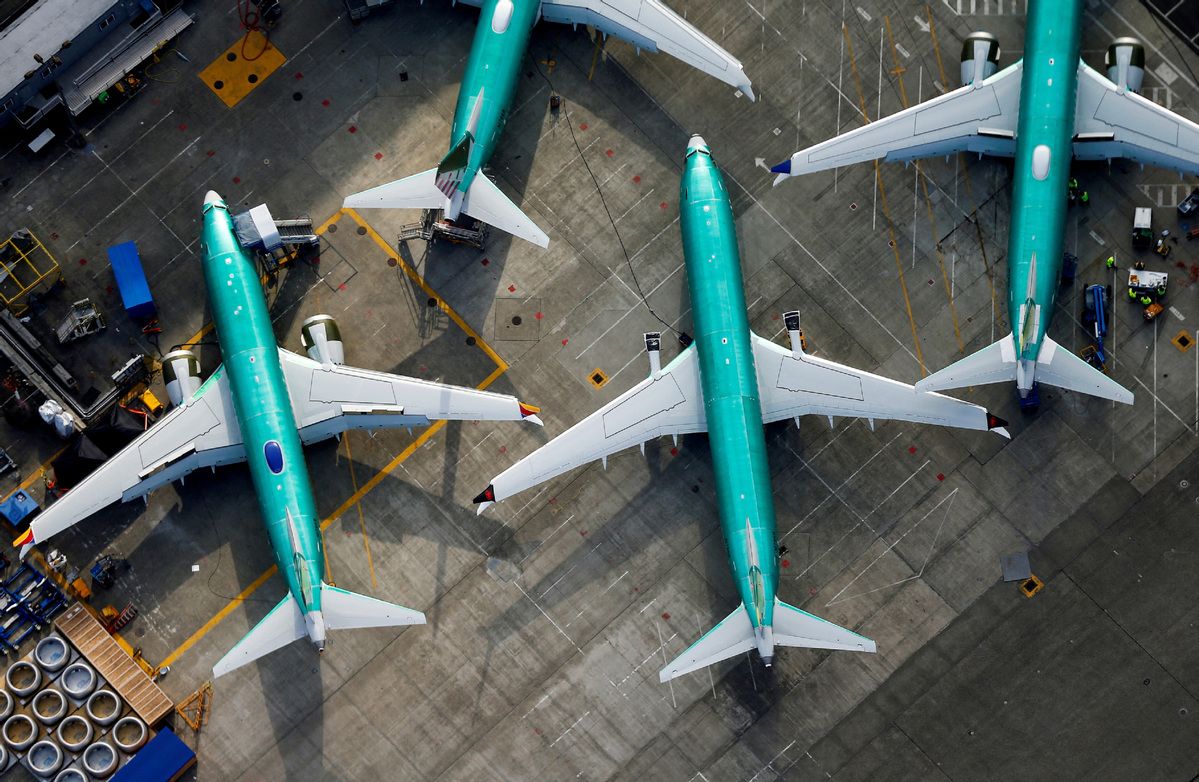source: editor:Zhang Wenni

FILE PHOTO: An aerial photo shows Boeing 737 MAX airplanes parked on the tarmac at the Boeing Factory in Renton, Washington, US March 21, 2019. [Photo/Agencies]
Boeing announced Wednesday that it is removing the head of its 737 MAX passenger aircraft program following an incident that left a fuselage hole in an Alaska Airlines plane last month during midflight.
Ed Clark, an 18-year Boeing veteran, is "leaving the program" immediately, Boeing Commercial Airplanes chief Stan Deal said in a memo to employees Wednesday morning.
Clark was the head of the company's production facility in Renton, Washington, which is the final assembly site of the 737 MAX airliner and builds its MAX 9 aircraft.
Deal said that Katie Ringgold, previously in charge of 737 deliveries, would take over the MAX program, and that another executive, Elizabeth Lund, would take on a new role overseeing quality across all of Boeing's commercial airplanes.
Clark is an engineer. His successor Ringgold has business degrees. She began her aviation career performing avionics systems maintenance and troubleshooting on C-130 cargo aircraft in the US Air Force.
Deal wrote that the leadership changes are intended to drive Boeing Commercial Airplanes' "enhanced focus on ensuring that every airplane we deliver meets or exceeds all quality and safety requirements".
The announcement came two weeks after a report from the US National Transportation Safety Board found that bolts that held a panel known as a door plug in place were missing when the nearly brand-new 737 MAX 9 used for Alaska Airlines Flight 1282 departed the Portland International Airport in Oregon for Ontario, California, on Jan 5. The bolts prevent the door plug from sliding up from the frame when pressurization changes in the cabin midflight.
The incident occurred at about 16,000 feet, when the door plug blew off the jet, forcing the pilots to return to Portland for an emergency landing.
The plug is a barrier used to cover a gap in the plane's body where an extra exit door could optionally be installed. The mishap could have been catastrophic if the plane were at cruising altitude.
The incident aboard the Alaska Airlines MAX 9 is the latest crisis for Boeing, which has been plagued by manufacturing problems after fatal crashes of its 737 MAX 8 in 2018 and 2019 that killed all 346 people on board the two flights.
Although there were no reports of serious injuries to passengers, some are now suing Boeing and Alaska Airlines, claiming the flight caused them trauma and injury.
The problems on Boeing planes have delayed deliveries to customers. A month after the Alaska Airlines flight, Boeing said improperly drilled holes on some MAX planes would delay handovers of the aircraft to airlines.
The Federal Aviation Administration has said it has increased direct inspections of Boeing's MAX production lines and said it would prohibit the manufacturer from increasing output until the agency is satisfied with its quality controls.
Boeing rival Airbus has ramped up production and deliveries of new planes.